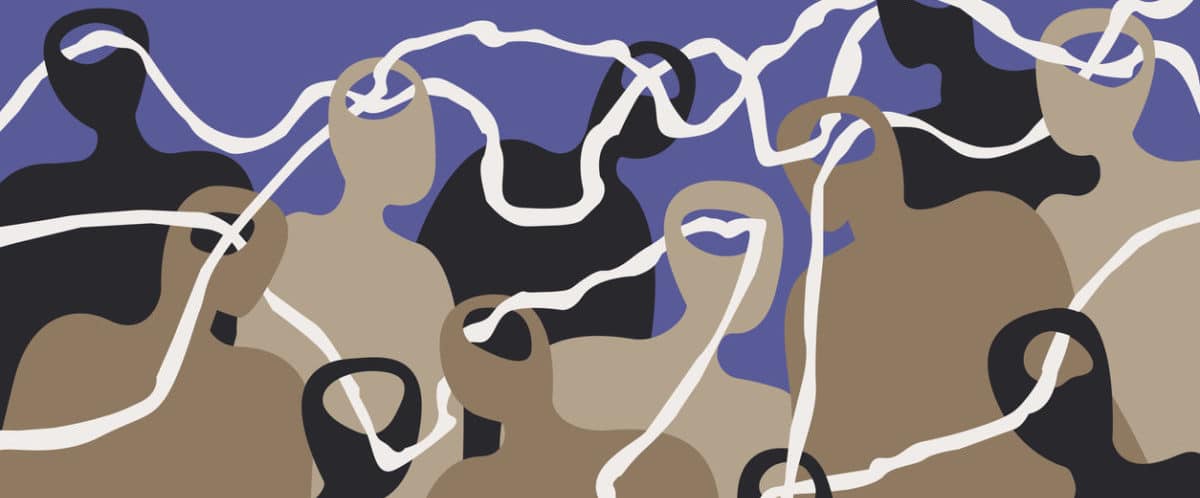If you want a truly accurate and helpful public square, one capable of helping a pluralistic democratic republic survive, you have to think about the well-being of the people who make up the press.
James Madison and George Mason described a free press as the “bulwark of liberty.” And that wall will have weak spots if the people in the profession are too few in numbers — or don’t receive the support they need to deal with the tremendous pressures they face daily. When journalists’ mental health suffers, so does our democracy. It makes it more likely that the Fourth Estate, an independent check on our three branches of government, will make mistakes, lose focus or be overwhelmed in its mission. When journalists thrive, they can better analyze complex issues, ask tough questions and connect with the communities who need to be both seen and heard.
Journalists cover the ills of society — civic, criminal, inhumane, environmental, technological and more — and do so in resource-limited newsrooms, on deadline. They witness, and sometimes even experience, disasters and the aftermath — not just as first responders but often as last. They report on the suffering of neighbors and draw the lines of context, aiming for clarity and poise so their community can be informed and make the best decisions for themselves and their families. The weight of such responsibilities can lead to compassion fatigue, anxiety, burnout and even post-traumatic stress disorder (PTSD). Journalists need support for their mental health to continue to cover the most pressing issues and even their solutions.
We believe supporting the mental health of journalists is not just a moral imperative; it is also in our best interest as citizens.
Post-lockdown, when nearly everyone thinks there is a mental health crisis in this country, we are seeing examples of news leaders stepping up to face this challenge. As the field’s numbers show high burnout among local journalists, some media organizations are:
- Hiring in-house therapists dedicated to serving journalists, professionals with a deeper understanding of the job. This is the case at the San Francisco Chronicle.
- Offering employee assistance plans across emerging local news collaboratives, helping smaller newsrooms gain support for their employees. This is the case with the Oklahoma Media Center.
- Piloting four-day work weeks, leading to “transformative results in their mental health, work-life balance, and productivity.” This is the case with Prism.
- Launching new services and resources for employees, such as Wellthy, which provides experienced care professionals and coaching to employees.
- Not only describing values like ‘self and community care,’ but putting them into practice. The Appeal lists this value and acts on it, using a 32-hour workweek and a no-DMs policy on Fridays, as well as company-wide closures, meeting-free weeks, regular 1:1s and providing an equitable and transparent compensation model.
But it is not enough. The field needs encouragement, empowerment and opportunity to learn from one another in how to lead newsrooms that can sustain mental health. And news leaders will be most successful if they have a command of the data and an understanding of the science to compel the behavior change necessary to sustain the people who deliver the work that then sustains a thriving public square.
The communities journalists serve need the field, and those who wish to support it, to get this right. Journalists who are mentally well themselves will be better suited to fairly and accurately tell the hardest of accountability stories and the stories that help communities come together across divides to solve problems. When trust in the news is running at an all-time low, the well-being of these gatekeepers is more important than ever because with each mistake or misreported detail or story gone untold, the trust erodes even more. Harms in our communities then have room to multiply, if we haven’t addressed the wounds in our press.
The American Press Institute is planning more on this topic in the coming months. We are already sharing ways for news leaders to “reset” their thinking on this topic, as we help them navigate available resources from others. We are supporting individuals who feel the burnout themselves. And we are thinking about how to create the structures like those above — and potentially new job designs altogether — that can help sustainably serve communities now.
If you care about democracy, you need to care about the mental health of the free press, made up of real people: journalists. If you want to do better at this for your staff or to find out more about our efforts to help news organizations more generally, please reach out to Sam Ragland, VP of Journalism Programs.
You might also be interested in:
It’s been a busy year for us: we held three API Local News Summits, built out a comprehensive guide to partnering with influencers, encouraged experiments with grants and cohorts, and supported news organizations with our products.
Today, we’re undergoing a bold transformation — reimagining ourselves as a platform that fosters generational solidarity and serves bicultural audiences from Gen Z to Boomers.
As director of inclusion and audience growth, Harris-Taylor will continue API’s efforts to drive organizational and cultural transformation while sharpening its commitment to diversity, equity, inclusion and belonging. She’ll also work to deepen API’s partnerships with community organizations and non-news experts.



